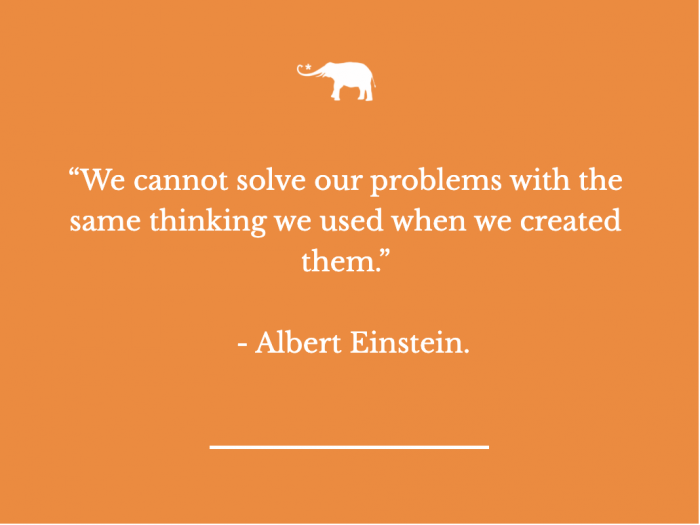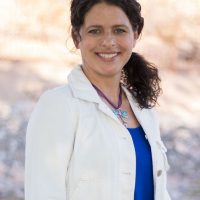What if your child was left standing outside the classroom door at an elementary school with an active shooter on campus?
Put yourself in the shoes of a five-year-old child.
Imagine one day you are at school. You’re in kindergarten.
Your everyday routine consists of coming to school, having breakfast, learning reading and math, playing at recess, going to the cafeteria for lunch, learning some more, and then going home.
You love your teacher and have lots of friends at school—you feel safe.
You believe you are in a secure environment. And then, one day, there’s an active shooter drill. Suddenly, over the intercom system, you hear, “Active shooter on the west side of the campus!” You are unsure if you are on the west side of the campus, but you know what “active shooter” means.
Your kindergarten teacher has explained that there’s a possibility that someone who is extremely unsafe might randomly decide to come to school one day and hurt people for no reason. They might even have a gun! And now, you are having to act as if that is happening right now.
Your teacher, trying to remain calm (but you can sense her nervousness), tells everyone to hide in the corner of the classroom, away from any windows and as quietly as possible. “Don’t make a sound,” she says, as she starts barricading the doors.
First, she climbs on a chair and starts tying a rope around the top of the door, so it won’t open if the bad guy tries to come into your classroom. You worry the bad guy might see her through the window on the door.
Next, she starts pulling desks and chairs in front of the doors. Hurry! your thinking—you don’t want anything bad to happen to your teacher.
“Stay down,” you hear her whisper. Someone next to you starts crying. “Shhhhh,” the teacher says, as she continues building a mountain of desks in front of the classroom doors.
Meanwhile, no one knows where the person pretending to be the active shooter is. Will he try and come to our classroom? you wonder. Finally, your teacher comes and joins the group, in the corner of the classroom—as far out of sight as possible.
You all wait. You wait and wait and wait. All the while, everyone is scared despite the fact that this is a drill.
The next thing you know, someone is at the door. The doorknob is rattling. The anxiety fills the room. It’s so thick you could cut it with a knife.
You hold your breath. The girl next to you starts crying even harder. The teacher must try and comfort her and get her to be quiet.
Now, the person is banging on the door. You know you are not supposed to answer it, but will he be able to get in? you think.
Finally, the person leaves. You feel relieved, but you all need to stay crouched down in the corner of the classroom until the coast is clear. The scenario above describes what active shooter drills are like at my elementary school.
And the scenario described is the best-case scenario. In some instances, the “active shooter” breaks into the classroom.
Pretend or not, imagine how it might feel to a five-year-old: A man you don’t know—pretending to be someone with a gun that wants to shoot people for no reason—dressed in black, who breaks the barricade and enters the classroom while you are all hunched in a corner trying to stay safe. Ugh!
And worse than that, teachers are directed not to open the door when someone knocks—imagine being the five-year-old child who happened to be in the restroom when the active shooter drill began.
Guess what? When you come and knock on the classroom door to get in, the teacher needs to ignore you—I kid you not.
You’d be left standing outside the classroom door with an “active shooter” on campus. And no matter how hard you bang on the door (at your school where you feel safe and thought you were in a safe environment), your teacher and classmates are going to ignore you and leave you outside. What? What effect is this having on our children?
Okay, let’s use our current climate of bullying, active shooters, child suicide, and culturally insensitive behavior (to put it mildly) as a jumping-off point.
Let’s move in the direction of a more positive climate—a world where children grow up understanding how to live from a place of love.
When everyone on the planet lives from a place of love, the problems will no longer exist. Let’s shift the paradigm.
How do we shift the paradigm?
We shift the paradigm by raising conscious children. It starts in the home, and it starts with the educational system.
If you’re a mindful parent, then you make the most of your time with your child.
It takes a village to raise a child, however, where do our children (between the ages of five and 18) spend most of their time?
In school. They are sometimes with their teachers more than their own parents because when they get home, they need to do homework, eat dinner, take a bath, and go to bed at a reasonable time.
Children spend the majority of their time in school, and we need every adult in our children’s lives to contribute positively to their upbringing—it takes a village.
Traditionally we, as a society, have been teaching children from a reactive point of view, especially in the public educational system:
>> Bullying occurs; we adopt an anti-bullying program.
>> School shootings happen; we have school shooter drills.
>> Children are depressed and committing suicide; we have trauma response training.
>> Minorities are mistreated; we have training on how to be culturally responsive.
It’s not that these things are bad, necessarily. They are an attempt to solve problems. However, there’s one major flaw with any reactive approach: namely, what you fight against, you strengthen.
There’s a War on Drugs, a War Against Crime, a War Against Terror, a War Against Cancer, and the list goes on and on.
Despite waging war on these things, they just continue to get worse—exponentially worse. The attention and focus get placed on the negative aspect of the situation.
What we fight against, we strengthen.
This concept is often a difficult concept for people to understand because they believe there’s a need to speak up, protest, and fight.
Even Einstein said, “You can’t solve a problem at the same level of mind that created it.”
When fighting against something, most people are focused on the problem. We can’t improve any situation when we’re focused on what we don’t want.
If we think we are marching for peace but inside we are doing so because we are against war, guess what? We are indirectly strengthening war.
At my school, when we put the focus on anti-bullying, suddenly everyone was being bullied. Even parents were calling the school saying their child was being bullied. Not to mention no one fully understands what true bullying entails. The problem got worse.
It’s time for a new, proactive, innovative approach to the problems facing our youth. If we start teaching children (from as young an age as possible) to live from a place of love, the current problems will eventually dissipate; we, the adults, can do this.
If we want to change the world, we need to change how we are raising and educating our children.
How do we raise conscious children?
Mindset.
It starts with the mindset that the world is a benevolent and beautiful place to live where anything is possible. It begins by teaching children that we live in a world where they can be happy and feel good the majority of the time, and most importantly, understand the times when they don’t feel good.
It requires us to model through example and explicitly teach social and emotional skills that facilitate a new way of being— living from a place of love, being love, emanating love, and consequently attracting love.
Schools need to offer social and emotional teaching and learning as a part of the curriculum.
Change in perspective.
Raising conscious children requires a shift in perspective for when bad things happen.
Teaching children to view contrast (what we don’t want) as a part of the evolutionary process, and with the intention to clarify what we do want (to move toward), is essential to a new paradigm.
Seeing contrast will help children develop a learning orientation toward life.
Join me in the intention of minimizing the chances that any child is the one left standing outside the classroom door at an elementary school with an active shooter on campus. Join me in the intention of irradiating child depression, bullying, racial and cultural biases. Be a part of my tribe.
Every school shooter was a kindergartener at one time, and every person was once five years old.
Let’s start teaching children—from as early an age as possible—how to love themselves first and foremost.
From a place of unconditional love and acceptance of themselves, they can unconditionally love and accept others—that’s how we shift the paradigm.
~







Read 3 comments and reply